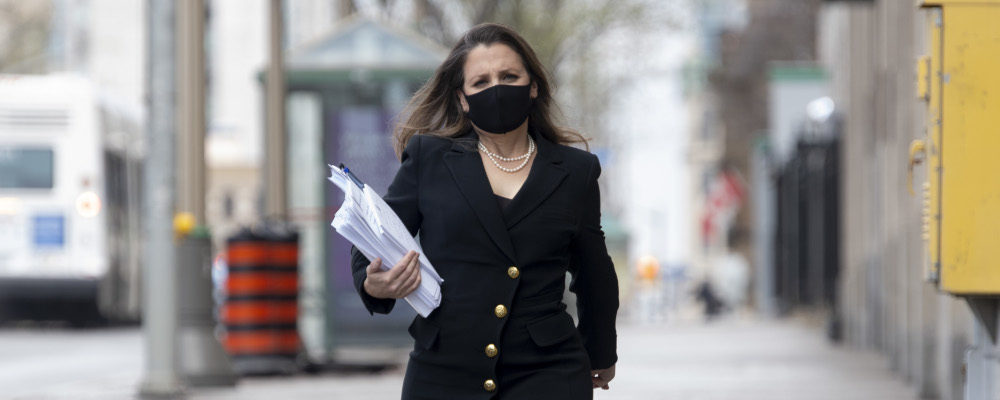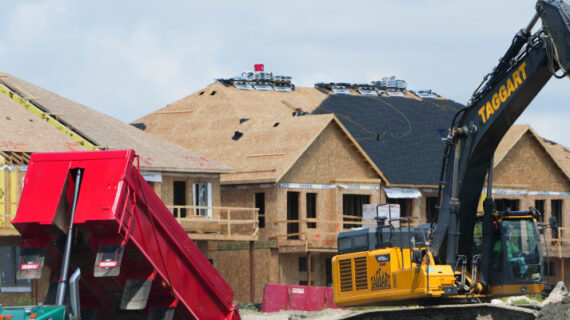It took 50 years to get to this point because it’s a bad idea.
The 2021 federal budget offers $30 billion over five years for a national daycare system. The promise dangles a sizeable amount of money in front of the provinces in exchange for the burden of doing the work and assuming significant financial and political risks that come with the made-in-Ottawa plan. While the federal government is promising 50-50 cost sharing by year five of the plan, the devil will be in details yet to be negotiated. And while the amount of money is sizable, it’s not enough for a quality system for children.
The sales pitch for the National Early Learning and Child Care Plan involves the promise of low user fees for families. Yet, the proposed national system is structurally opposed to equity for all families because it limits funding to the type of care the government chooses. All families will pay for the plan, but only families who want or are able to access the regulated care on offer will receive the subsidized benefit.
How did national child care find its moment?
The idea of a national program has been debated for half a century, but has simmered on the back burner ever since the Liberals were unable to implement a plan following the 2006 federal election loss. Since then, sitting governments including Liberal governments, have continued with a mix of tax credits, cash payments and government transfers.
The COVID 19 pandemic provided what Finance Minister Chrystia Freeland called “a window of political opportunity” to advance a national child care system. The purpose of the program is clear; increase the workforce participation of mothers to grow the GDP.
When the global pandemic came to Canada early last year, advocates reasonably argued that many care options would shutter leaving growing demand as parents, and women in particular, were ready to return to work. They argued the current child care ecosystem was too fragile and establishing a new national program would be the key to economic recovery.
A year later, hard data suggests supply is available, in part due to emergency funding. While many provinces temporarily closed child care services, the sector was largely back online by the fall. Ontario and Alberta reported over 90 percent of licensed operators were up and running by the end of September 2020. Thanks in part to emergency funds, a majority of parents were able to return to their pre-pandemic arrangements as illustrated in an Angus Reid Institute poll published in March 2021.
Some provinces like Alberta with a near full return of licensed spaces report a provincial vacancy rate of 50 percent. Statistics Canada data released earlier this month reports a national decline in the use of non-parental care of about 8 percentage points compared to pre-pandemic use. Budget 2021 has arrived at a time when supply has largely outpaced demand. In keeping with this data, the text of the budget says little about supply and instead focuses on reducing the cost of existing care.
What’s in Budget 2021
The headline number of $30 billion is spread over five years starting with $4.1 billion in 2021/2022, climbing to $7 billion by year three to $9.2 billion by 2025/2026. The budget promises 50/50 cost sharing with the provinces and territories by year five. Funding beyond this commitment will be determined based on provincial progress and need.
The central feature of the program is to reduce user fees for licensed care to $10 a day by 2025/2026 The program begins with a 50 percent reduction in average fees for those who use regulated care outside of Quebec. The program also promises to increase child care spaces among not-for-profit providers. The focus on not-for-profit, licensed care, among other factors, is a significant risk, leaving the provinces needing to play catch up right from the beginning.
Why? The intention of reducing fees for licensed care by 50 percent in the first year is to draw parents into the paid labour force. Lowering the cost in one segment of the sector will push those already in the paid workforce but using unregulated care to seek out the cheaper, publicly subsidized care. Driving up demand by slashing prices for one type of care will likely result in supply issues including long wait lists. It could also lead to job losses as unregulated providers, like the neighbour down the street offering care for a handful of neighbourhood children, will not be able to compete. The federal plan does include space creation, but focuses only on the licensed not-for-profit providers. In short, the plan triggers demand it can’t meet, by destabilizing good choices in the existing ecosystem of care.
When Quebec introduced its universal system, the independent sector collapsed. Unable to meet the new demand for subsidized spaces in the network of Centres de la petite enfance (CPE), the province introduced tax credits to encourage the growth of the independent sector. Two decades later, only a third of children attend the higher quality CPE network. Despite the $2.4 billion spent annually on the province’s system, the Quebec auditor general’s fall 2020 report found that 46,000 children are waiting to access the CPE network and an additional 9,000 children are in non-subsidized care. In short, the Quebec model the federal government desires to emulate remains a two-tiered system.
The Quebec model is not an example, but rather a cautionary tale. Peer-reviewed studies show child outcomes associated with the system are poor, including outcomes like worse health and lower satisfaction among children into the school years. Another study found lower parental consistency and fewer positive parental interactions particularly among girls associated with the Quebec system. Scaling up care for vulnerable populations like children, is very expensive and difficult to do well.
Some parents would benefit from lower user fees, but only those who choose to or are able to access the subsidized care. Families have diverse care needs, and pre-pandemic data shows 40 percent of families do not rely on non-parental care. They’ll all pay for the governments $30 billion commitment, but many will not get the benefit.
In 2015, Liberal MP Adam Vaughn criticized the short sightedness of Thomas Mulcair’s $15 a-day child care proposal arguing the NDP didn’t know how to pay for the federal portion and required the provinces to foot a hefty portion of the total cost. He said Mulcair is “asking them (the provinces) to do all the heavy lifting but hasn’t spoken to the Premiers about it.” In a sense, Budget 2021 is taking the same blind leap without accounting for what lies below. It promises big spending with few details, but requires the provinces to do the heavy lifting while assuming a lion’s share of the risks.
Parent will only benefit from the system if they use the care options the government subsidizes. Child care is the care of a child, no matter who does it, and the federal government had the policy levers to support all families regardless of their care needs. Instead they chose a one-size-fits all government monopoly that treats families inequitably based on their care needs.




